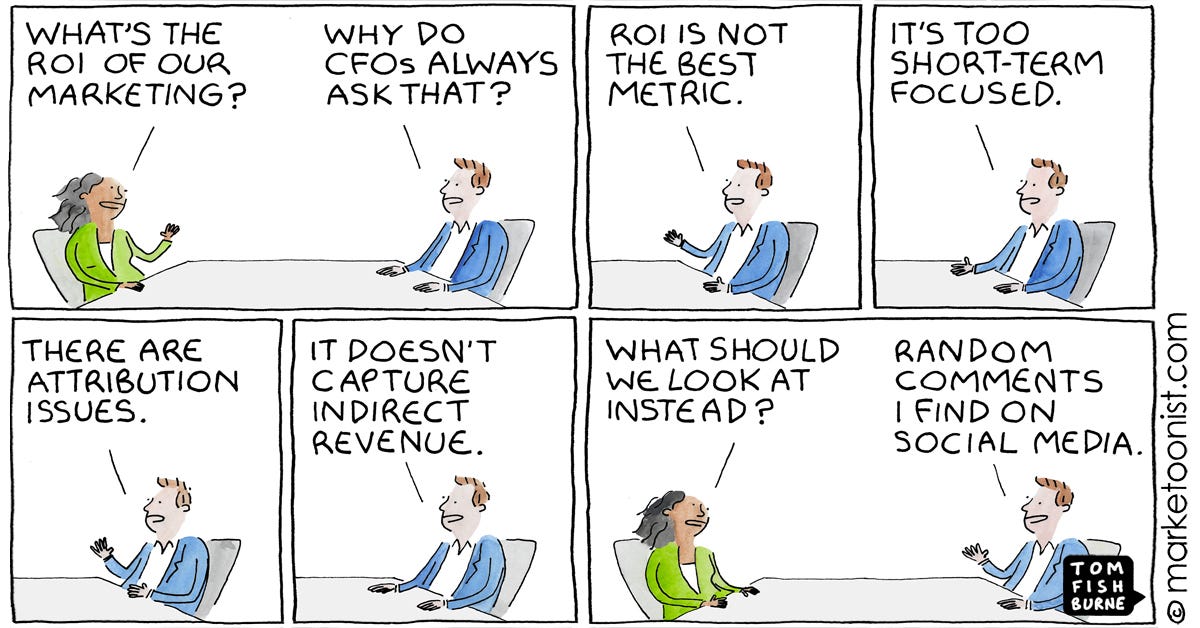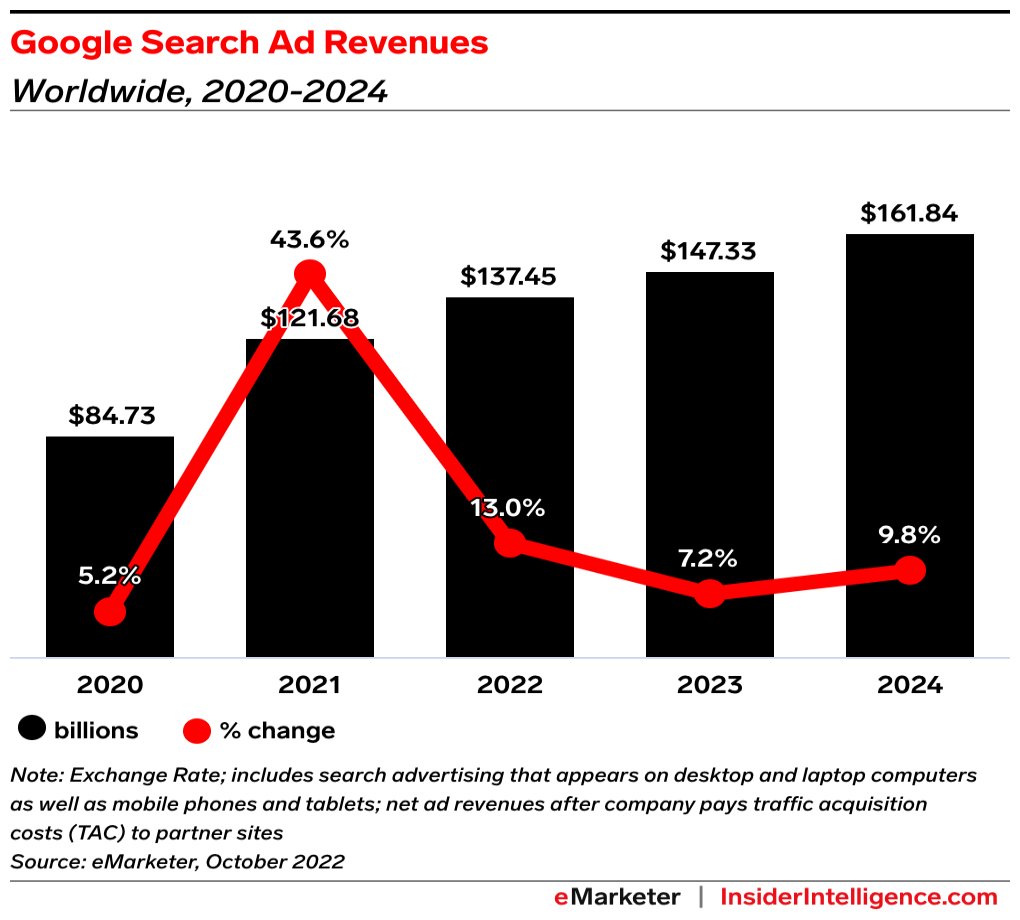How to Optimize Your Marketing Budget in a Competitive Industries?
While maintaining good efficiency.
In today's fiercely competitive market landscape, standing out is not just about being louder but smarter, especially when spending money. Marketing budgets often balloon as businesses strive to claim their share of voice, yet not all investments yield fruitful outcomes.
There is always the challenge for marketing leaders, on how to get the most out of their campaigns without breaking the bank and still delivering revenue growth. It turns out that this question is even harder to answer, especially in a niche or industry that is hyper-competitive, where companies can go "bananas" with their budgets.
In today's post, I will try to provide my view on this never-ending marketing challenge.
Let's dive in.
Why are we in this situation today and why is it harder to compete?
Every problem has a solution. But before we go there, it's important to understand the root cause of what we are discussing today. There are 3 specific areas where I believe the challenge lies for a company that is struggling to compete with their existing marketing budgets:
Understanding the competitive landscape: Every company and marketer is fighting for the same user pool as you. It's extremely important to recognize market saturation, and it is mission-critical to find a way to stand out.
Budget allocation: When you are in a competitive niche, allocating a budget is quite tough as well, because you want to cover more digital marketing channels, create more comprehensive campaigns, and of course, be as profitable as possible. That's why I've seen even companies with not-so-small budgets getting beaten up, because simply they are not effective.

Achieving ROI: Every marketing team wants to be competitive, wants to spend money, wants to be creative, but let's not forget that at the end of the day, you need to show strong ROI and growth, considering the marketing department usually consumes at least 30% of the overall company budget. And when you are competing with companies who have similar or double your budget, you need to be sharp and think outside the box

How does not optimizing budgets impact our business?
In the previous point, we've understood the common challenges companies face regarding their marketing budgets. It's also important to understand what the impact on your business will be if you just stay fixated on what you are currently doing and are not willing to optimize your budgets.
Let's face the reality, your competitors are growing and their pockets as well. There is almost no niche where you can have room to breathe and where your marketing cost can be inexpensive.
For me as a leader, here are three main business areas where it hits the hardest:
Impact on profitability
Effective marketing budget management is essential for maximizing profitability. By strategically allocating funds to the most effective channels, businesses can ensure that each dollar spent contributes directly to revenue growth. This precision prevents overspending and optimizes financial outcomes, turning marketing from a cost center into a revenue driver.
Sustainable Growth
Strategic marketing is not just about immediate returns; it's integral to long-term business sustainability. By focusing on targeted and effective marketing strategies, companies can attract and retain a loyal customer base, which is essential for steady growth.
Resource Efficiency
In highly competitive industries like technology, retail, and consumer goods, companies face immense pressure to consistently engage with their customers. This demand can quickly deplete resources if not managed carefully. By optimizing your marketing budget, you ensure that resources are not merely spent but invested judiciously. This approach entails making strategic decisions that emphasize activities with the highest returns while reducing expenditures on less effective initiatives.
Why do most marketing efforts fail?
I can speak at length about this specific part because I've been many times heavily involved in marketing and the whole budget operation. And this is where I've seen companies still push forward with their campaigns, just to show some progress and numbers, but not really paying attention to the long game and how their industries are changing - both from customer desires and channel saturation.
Let's discuss a few of my favorite reasons why using common solutions equals failure.
Today, there are more marketing channels to tap into (compared to just a decade ago). Logically, this creates more user distribution across them, but at the same time more players in the market hunt for the same user base.
What teams usually do? - Drastically increase their budget just to stay on top of the line across all their primary channels and trying to push out competition (which never works by the way in competitive industries). What happens over time is that you start to miss your “product-channel fit,” simply because what you care the most about is the “user number count,” not the quality.
You always need to have a good target strategy in any advertising channel because your budget can run up pretty fast. Take Google for example, where average ad spend has increased over the years. Just to look at the their ad revenue over the years.
How do you achieve that? ( wink ).

What teams usually do? - Ballistically increase the spend across core advertising channels with not so great audience targeting. A common example is when performance marketing teams start to chase a "broader audience" for their PPC campaigns, simply because this is where they can achieve the highest exposure. But, as we know (or don't), the quality of the user drops significantly, which only drains your budget.
In a company with an awesome growth trajectory and great P&L, there's always the need to cut long-term impact channels.
What teams usually do? - Branding is the "channel" that usually gets cut first, while the budget is redirected to more "efficient and scalable" channels. This is mainly because it takes more time to see the impact of branding compared to performance channels. Also, teams tend not to deeply analyze the drawbacks of reducing spend on essential long-term strategies like brand awareness. And trust me, when you are in a competitive niche, that matters a lot.
What can you, as a marketing leader, do to survive in a competitive niche?
Even in competitive niches, there is still a way to dominate and get the most out of your marketing budget, and I've seen this a few times in my career. The suggestions are based on my experience and observations in niches like healthcare, edtech, personal finance, and more.
Embrace Data-Driven Decision Making
This might sound trivial, but numbers speak louder than you might imagine, especially in marketing where it is usually the end game.
There are two focus areas to make the most of your marketing efforts with data:
Leverage Analytics - It's important to gain a profound understanding of customer behaviors and preferences. Invest in tools that provide detailed insights into the most profitable marketing channels, enabling you to optimize your investment based on these findings.
For example, Netflix uses viewership data to not only decide which types of original content to produce but also to determine the marketing spend on promoting each series.
Continuous Testing - You cannot streamline channels and audiences without experimentation. Securing small wins and iterating at a faster pace can give you an edge over your competitors, especially when these gains start to compound over time. In more expensive channels, you can optimize costs by understanding where you have allocated more budget and where less.
Amazon is renowned for its culture of experimentation, reportedly running thousands of A/B tests annually. This continuous approach helps them optimize every aspect of their customer experience and marketing effectiveness.
Prioritize Digital Efficiency
Marketing budgets today are usually a mix of online and offline channels. In more competitive industries, where consumer attention is divided across multiple platforms, I would lean towards shifting more to an online presence and allocate resources there - think of channels such as SEO, content marketing, or targeted social media campaigns. I won't say that offline channels are bad for eyeballing, but they are way more expensive, take time to make happen, and tracking & ROI is usually a hard challenge.
My second point is to optimize your budget, where you allow more investments in Programmatic Advertising. Why? It automates the ad buying process and enables more precise targeting of audiences. This method not only increases ad efficiency but also significantly cuts down on spending waste. By leveraging advanced algorithms, you can continually optimize your campaigns and achieve superior market engagement.
To learn more about Programmatic advertising, check out Smartlyads deep dive.
Focus on Customer Retention
Emphasize engagement rather than just acquisition. Sometimes, marketing cannot solve all your growth problems, so you need to look beyond for scalable solutions. Retention is the key to unlocking it and reducing the pressure from the top of your funnel (and potentially saving some money). Instead of concentrating solely on acquiring new customers, enhance efforts to retain current ones. Developing customer retention tactics, like loyalty programs, personalized communication, and special promotions, can be more economical and effective than strategies aimed at acquiring new customers.
Optimize Creative Production
This is an interesting solution to consider for your marketing efforts, especially if you compete at the highest level.
Repurpose Content - Enhance the ROI of your content by transforming high-performing assets into various formats and distributing them across multiple platforms. For instance, a well-received blog post can be converted into a video, a podcast episode, or a series of engaging social media posts, thus extending its reach and impact.
GoPro excels at repurposing user-generated content across its marketing channels, which not only saves on production costs but also enhances authenticity and engagement with its audience.
In-house Creation - Build your in-house content creation team to minimize reliance on external agencies. This strategy not only reduces costs but also accelerates the production process, allowing for quicker adjustments and more dynamic campaign execution.
By bringing much of its creative production in-house, Red Bull has been able to cut costs and increase the responsiveness of its marketing content across multiple platforms.
Smart Resource Allocation
Dynamic Budgeting - You and your team need to learn to adopt a flexible budgeting approach rather than sticking to a fixed annual budget. This strategy enables you to allocate resources in real-time, adjusting to market trends, campaign results, and new opportunities as they arise. For instance, companies often use marketing analytics tools to track the performance of various channels and then shift their budget allocation to emphasize those that offer the highest ROI.
Cost-Effective Innovations - Regarding cost-effective marketing innovations, the utilisation of new social media platforms and AI-driven tools offers significant opportunities for reaching customers without a hefty price tag. A notable trend is the rising investment in platforms like TikTok, where companies are increasingly allocating more budget due to its high user engagement and potential for rapid growth. Additionally, the integration of AI tools for hyper-personalized marketing campaigns allows businesses to enhance customer engagement and conversion rates effectively, thus maximizing their marketing ROI with relatively low investment.
Hubspot wrote an interesting and in-depth piece about budgeting - Marketing Budget 2024
In wrapping up, my focus on optimizing our marketing budget has taught me the value of adaptability and precision. Investing in what truly works—not just what's trending—has shaped our path to achieving better results with fewer resources. This personalized approach will guide our strategies moving forward, ensuring that each marketing dollar advances our goals.





